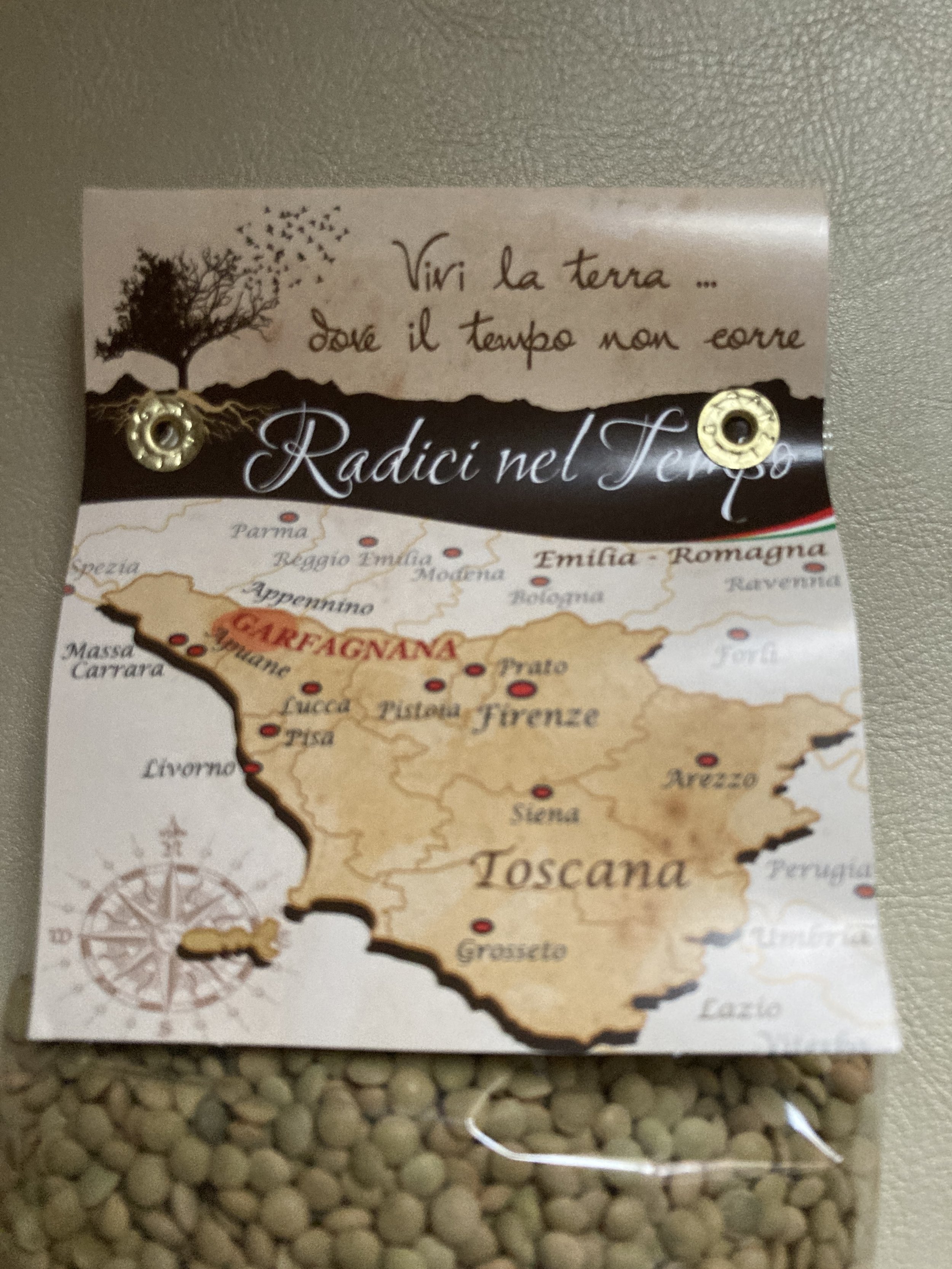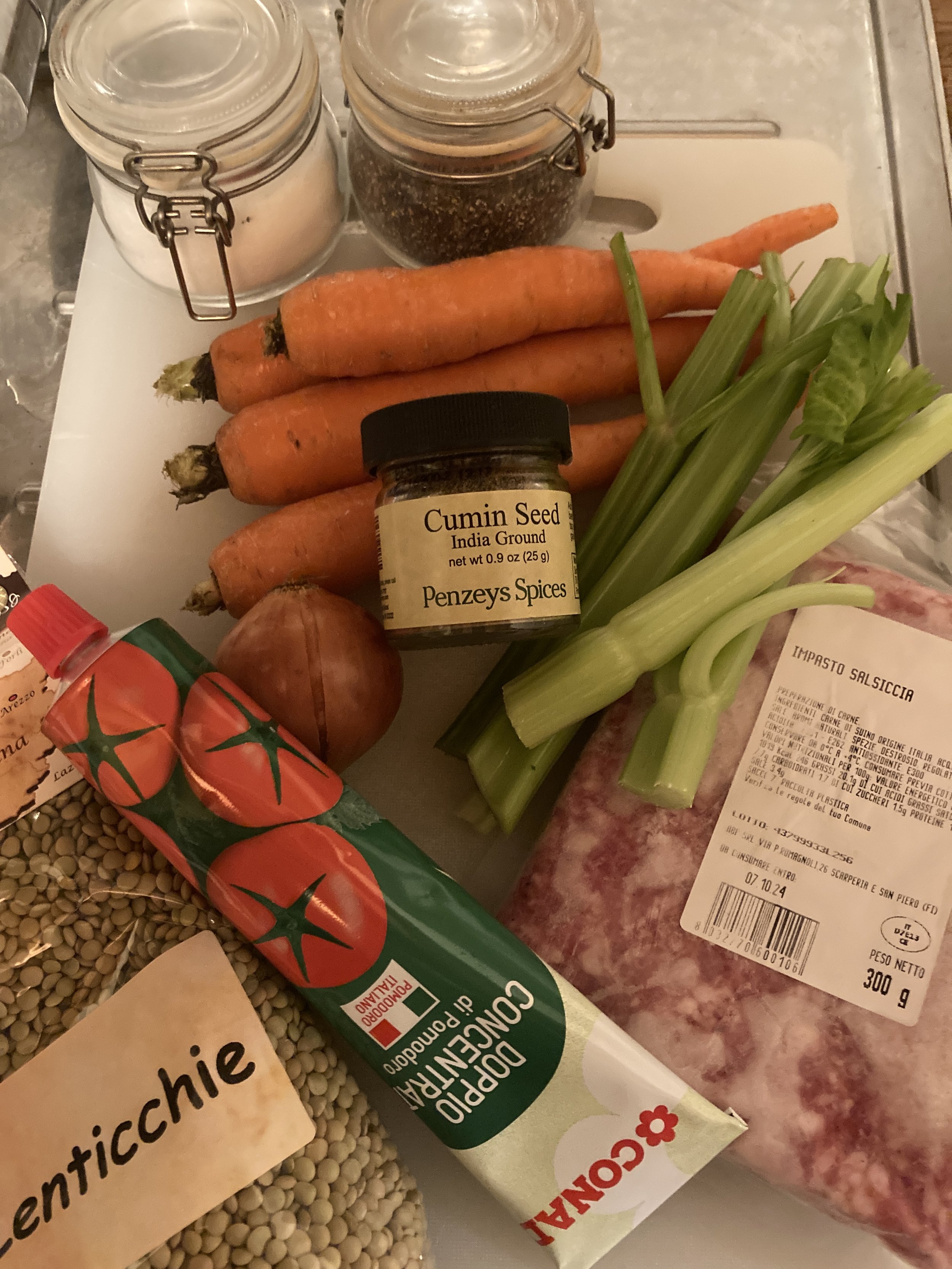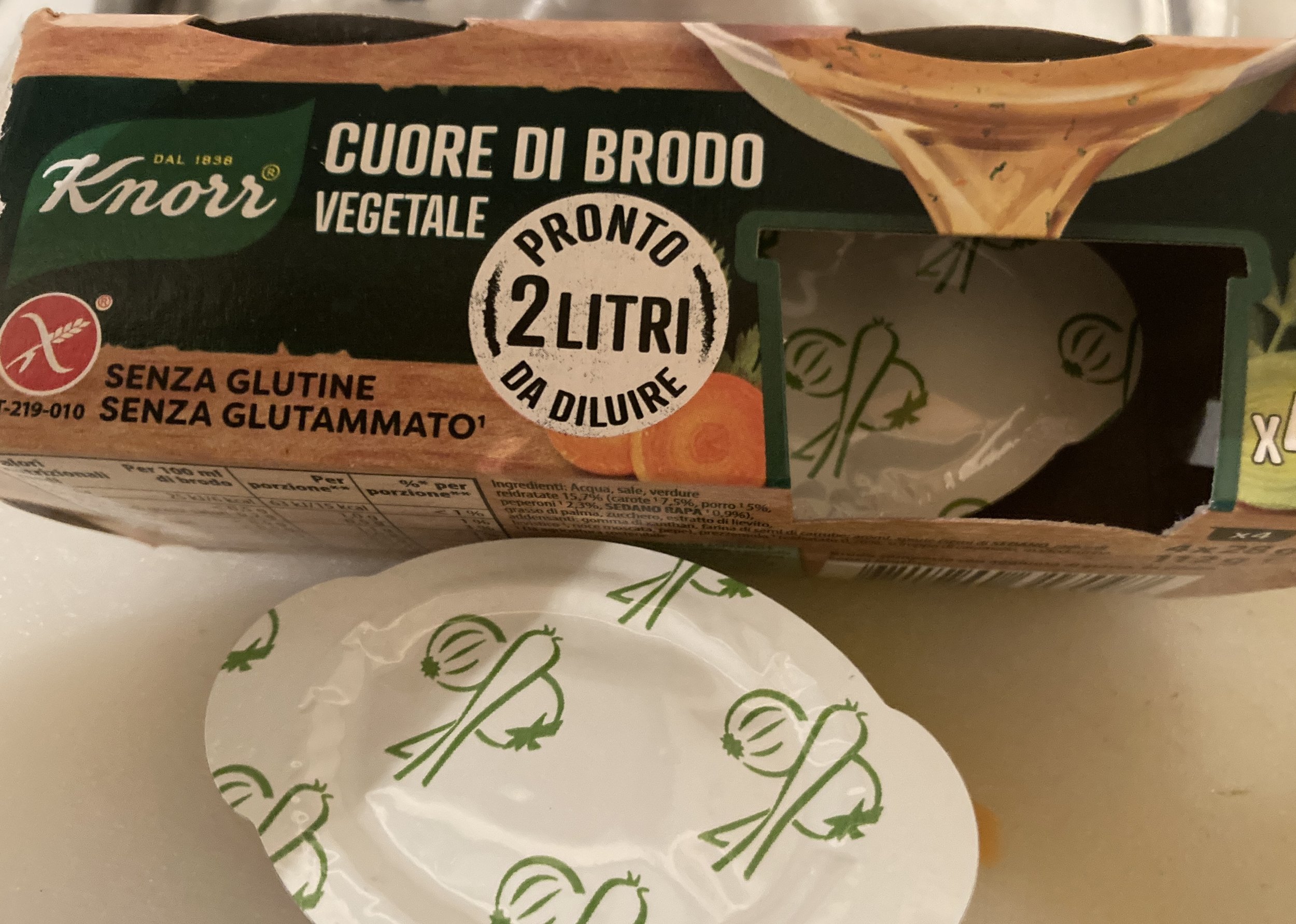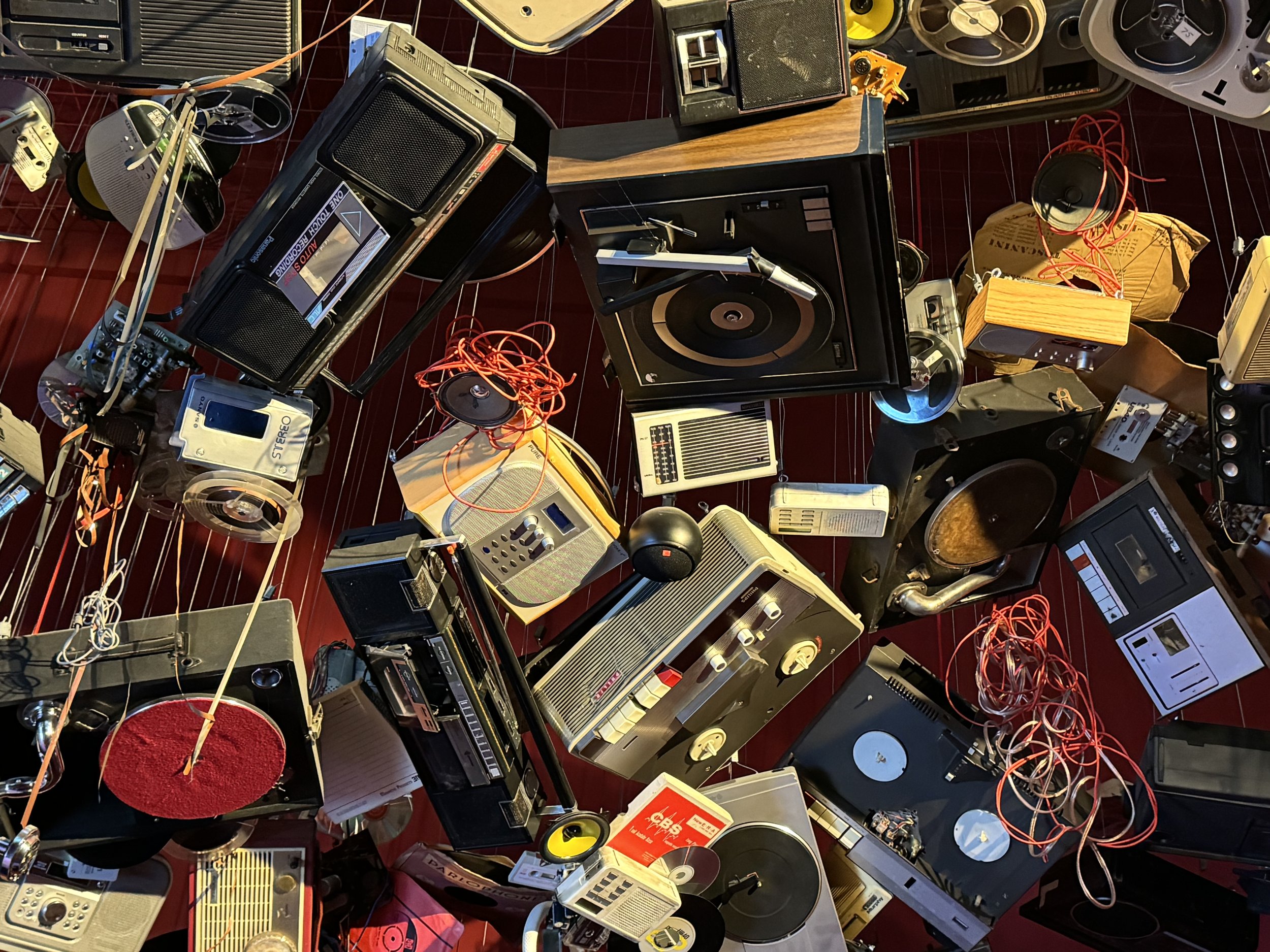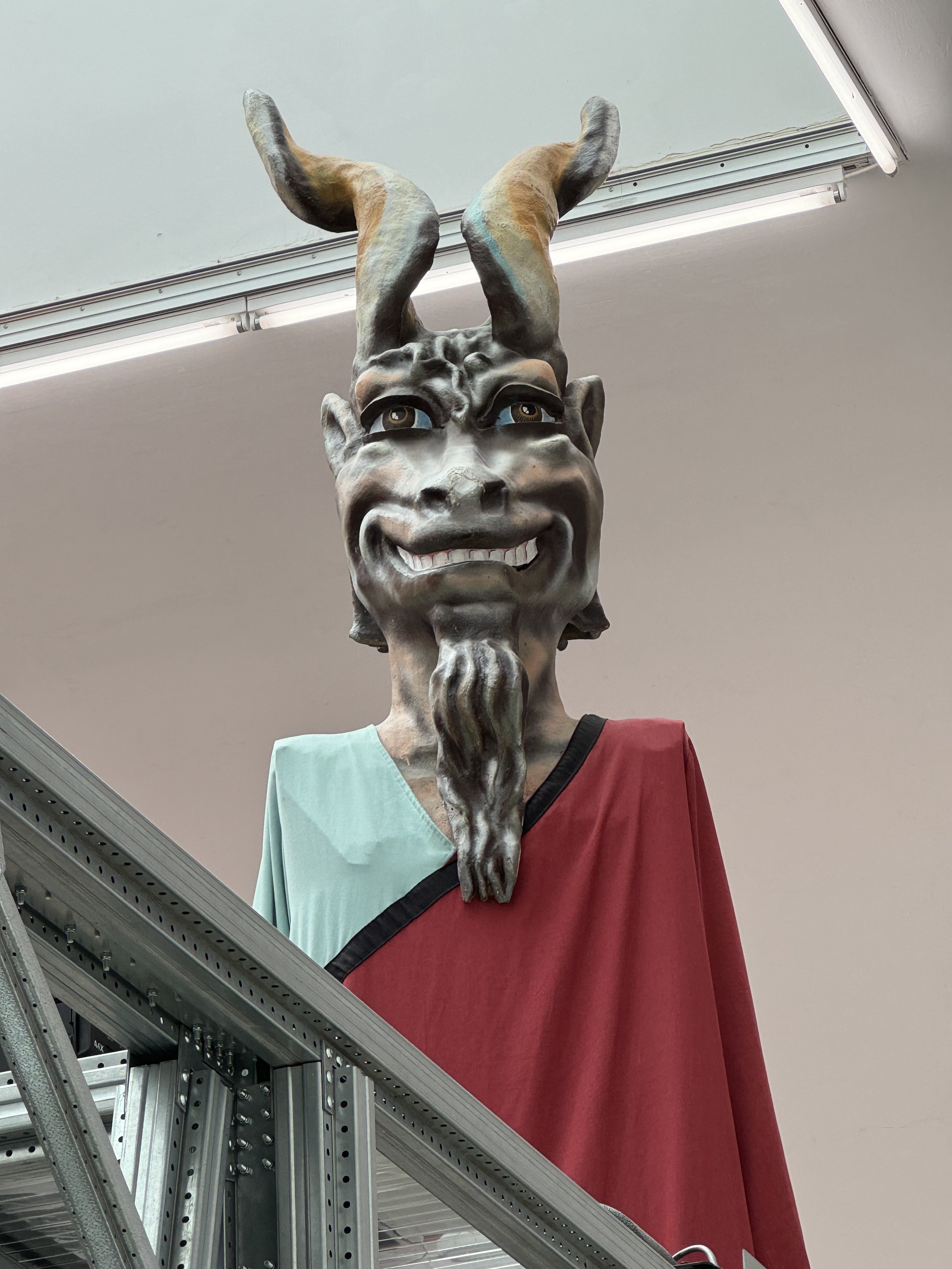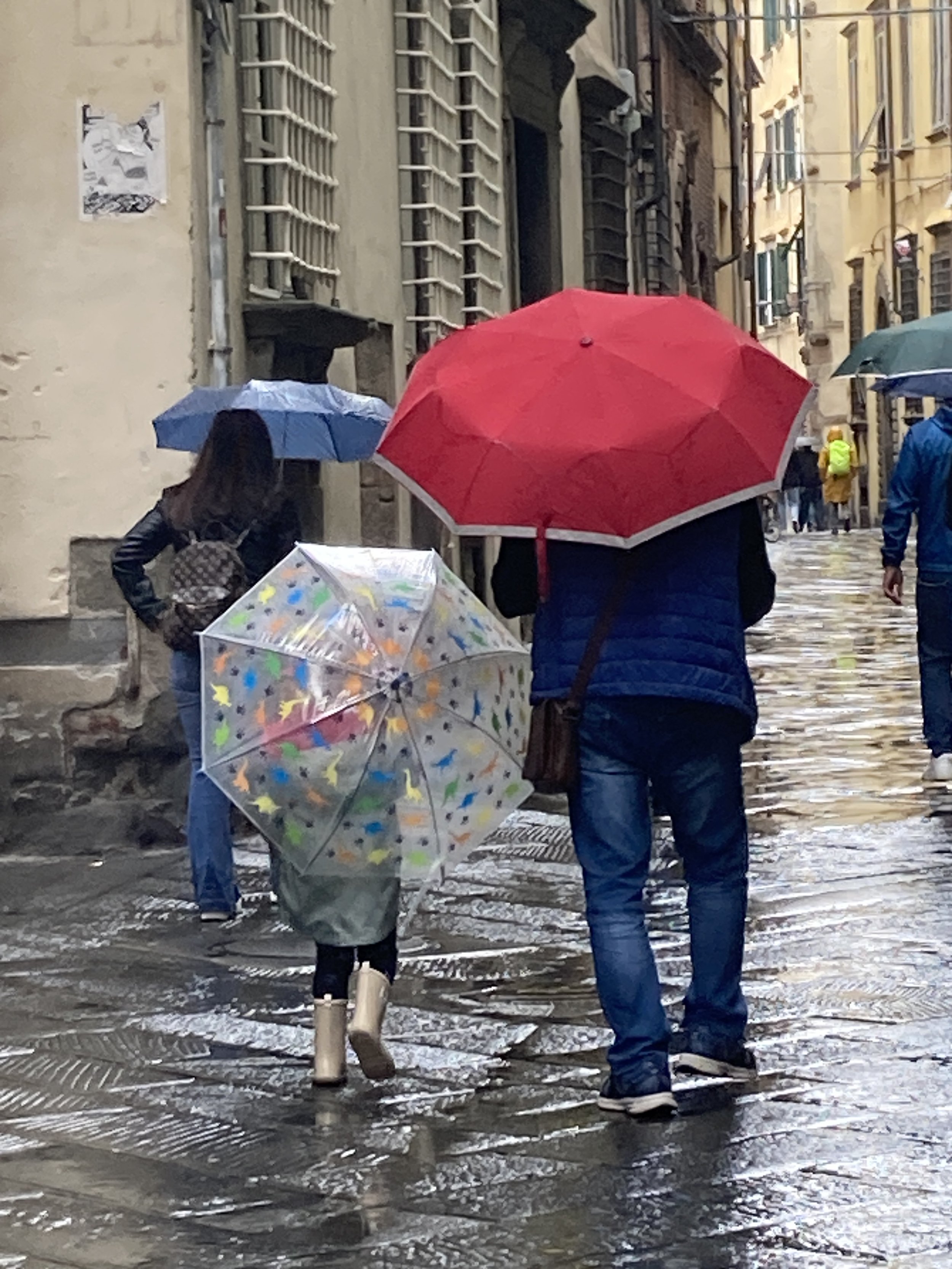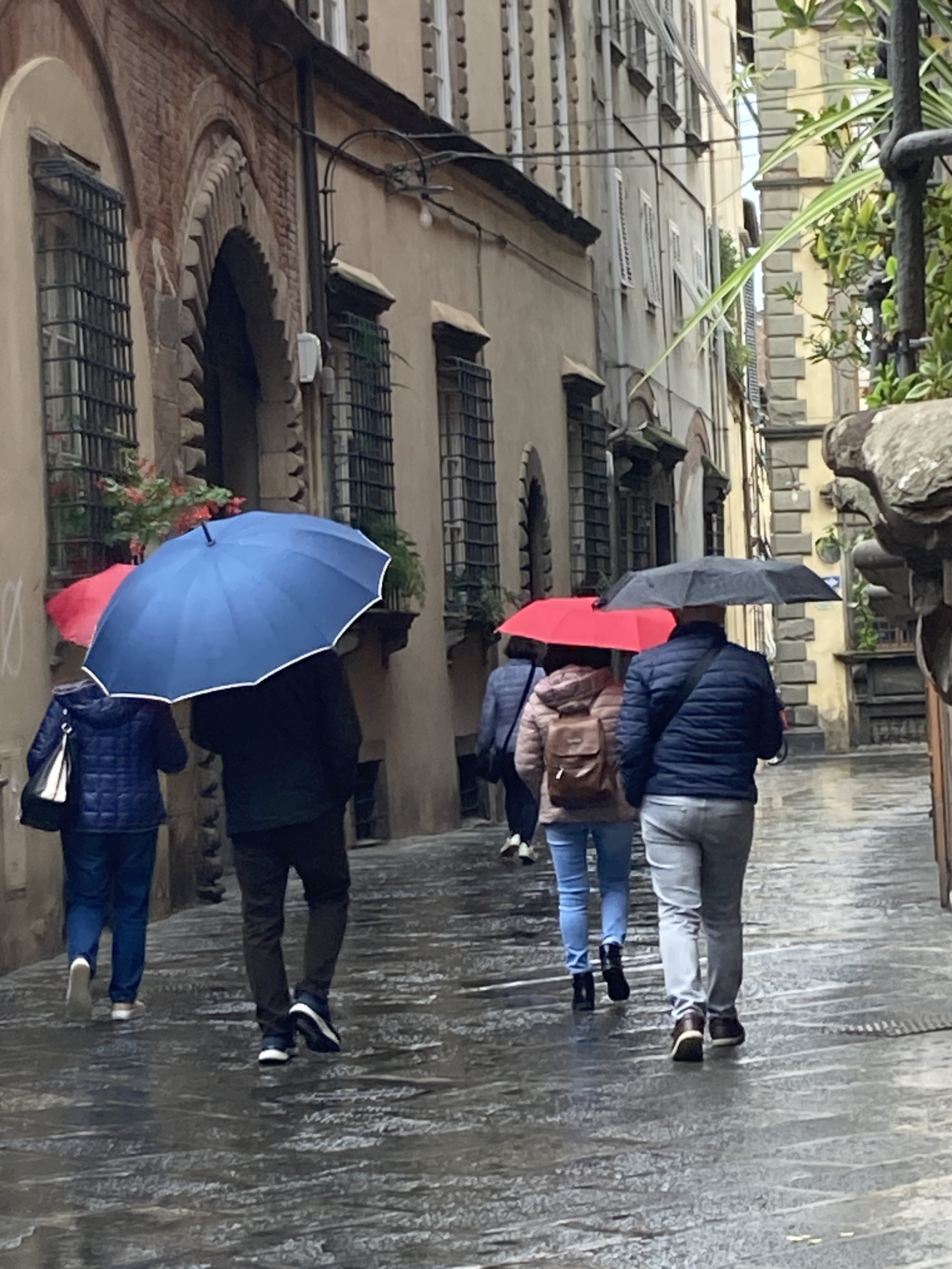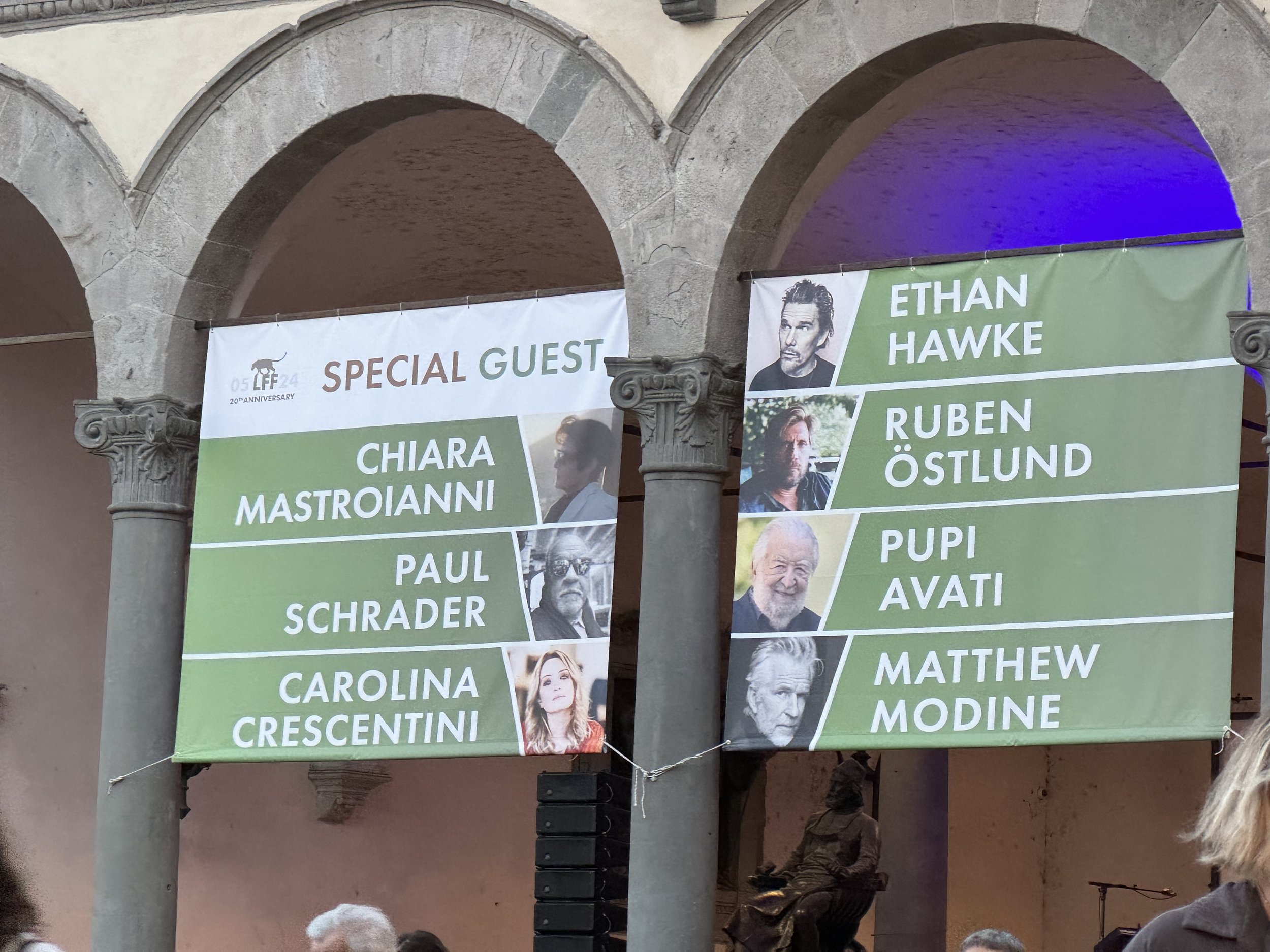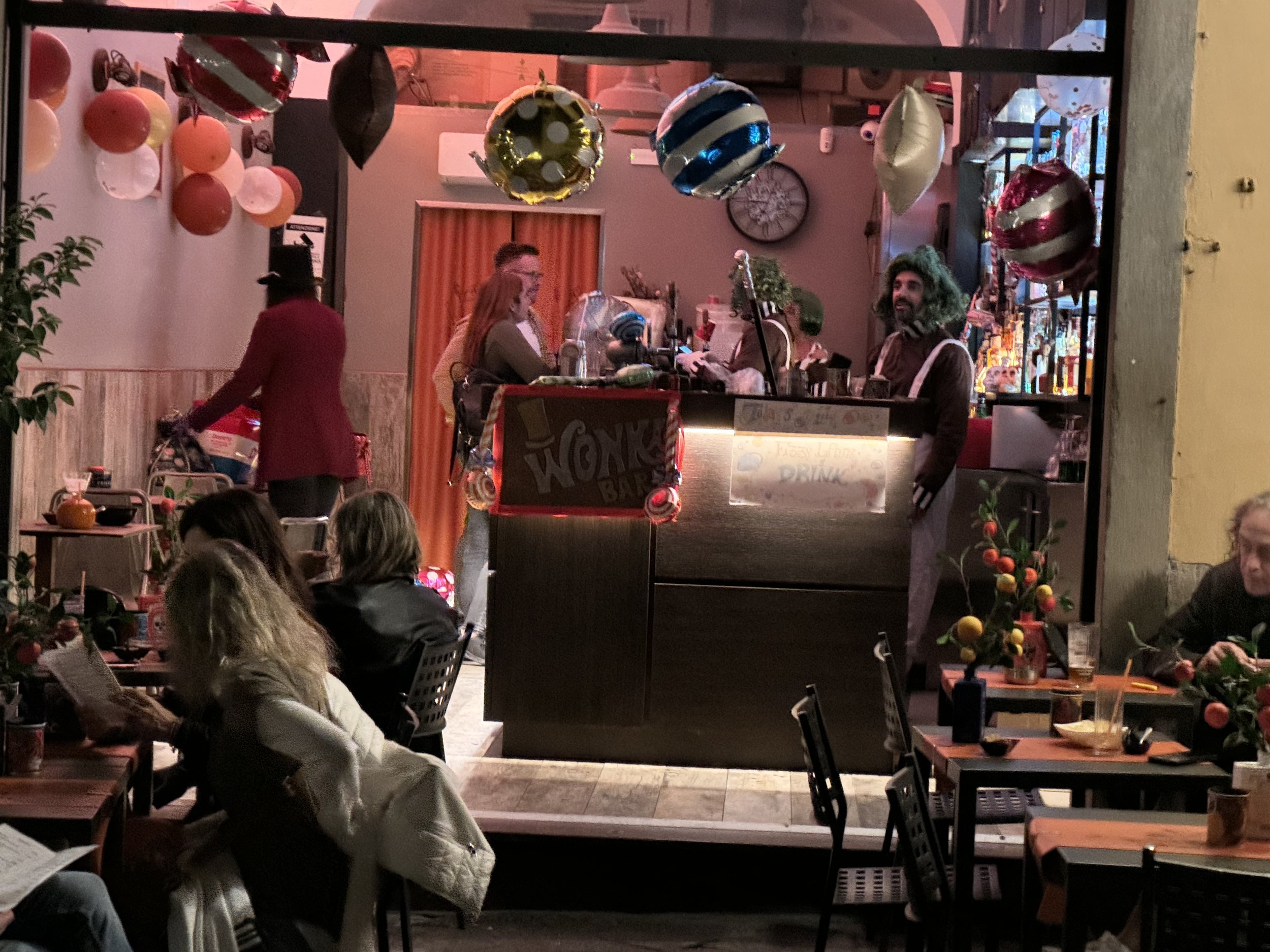From My Italian Kitchen: Lentil Soup for the New Year
Tiny green lentils, grown near Lucca in the Garfagnana are my choice as a base for lentil soup
Lentils (Lenticchie in Italian) are a traditional food in Italy at the New Year. The round shape resembles a coin and those tasty little coins portend fortune in the new year. And who couldn’t use that?
Since I love soups, my Italian new year tradition is a rich lentil soup filled with veggies and sausage.
For this soup, the perfect lentils (both for texture and flavor) are the tiny green ones. Here in Italy I use ones from the Garfagnana, the area of Tuscany northwest of Lucca.
In the US, finding imported Italian lentils may be a challenge, but some type of tiny green ones can often be found in the supermarket. They work almost as well as Italian ones in this soup. Do they bring Italian fortune? Hmm. That I can’t guarantee.
Simple crostini are perfect alongside this soup. Good bread toasted, good EVOO, a rub of garlic and a sprinkle of salt are all you need.
Simple crostini - thin slices of toast rubbed with garlic, drizzled with really good extra virgin olive oil, and sprinkled with a touch of salt - makes the perfect accompaniment for this soup.
Here’s my recipe:
Zuppa di Lenticchie (Lentil Soup)
190 grams small green lentils (1 rounded cup)
1 medium red or yellow onion, chopped
2 ribs celery, cut as small dice (about ¾ cup)
2 – 3 carrots, cut as medium dice (about 1 ½ cups)
2 tablespoons double concentrated tomato paste
¼ teaspoon course ground black pepper
½ teaspoon ground cumin
½ teaspoon salt
1 tablespoon chopped fresh parsley
200 grams pork sausage, crumbled
1 ounce container of Knorr vegetable stock *
Cover lentils with boiling water, soak x 15 minutes and then drain
Cover drained lentils with 1 inch of water, bring to a boil and simmer x 15 minutes
Meanwhile, sauté onion in 1 tablespoon extra-virgin olive oil until onion softens and is transparent. Add celery and carrots and sauté another 5 minutes.
Add sautéed veggies, spices, tomato paste, and chopped parsley to the lentils.
In a frying pan, crumble the sausage and brown until cooked through, add to lentils along with the Knorr vegetable stock or bouillon cubes.
Add ½ cup water and simmer everything x 30 minutes, adding more water as needed to thin the soup.
*In Italy, Knorr vegetable stock is called Cuore di Brodo Vegetale and comes in a package of little 1 ounce plastic cups of jellied stock. These are sometimes available in the US, but can be hard to find at least in New Mexico where I am from so I usually bring some from Italy. If not available, just substitute a low salt vegetable bouillon cube or two or homemade vegetable broth in place of the water.
Buon appetito, Buon Anno Nuovo

